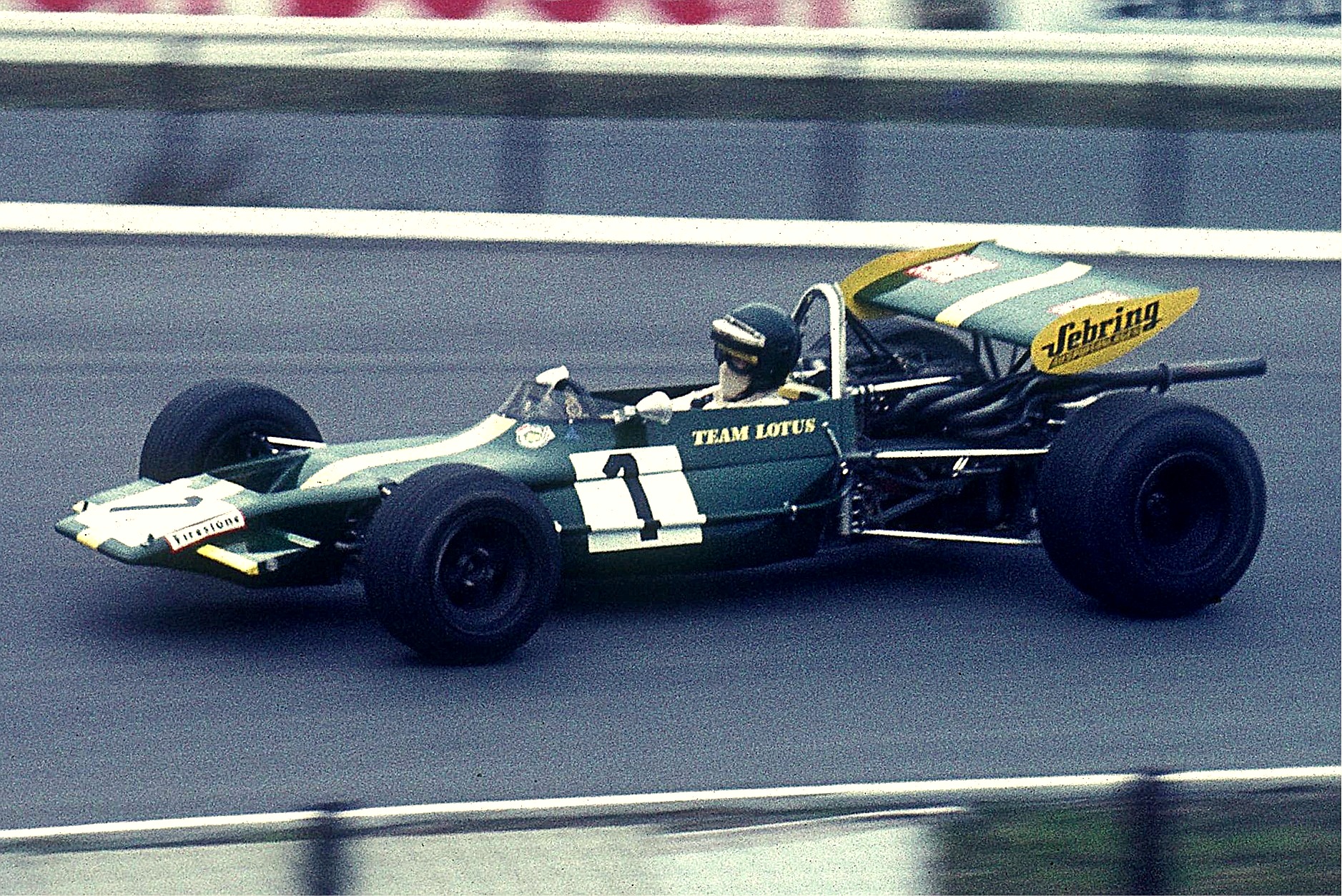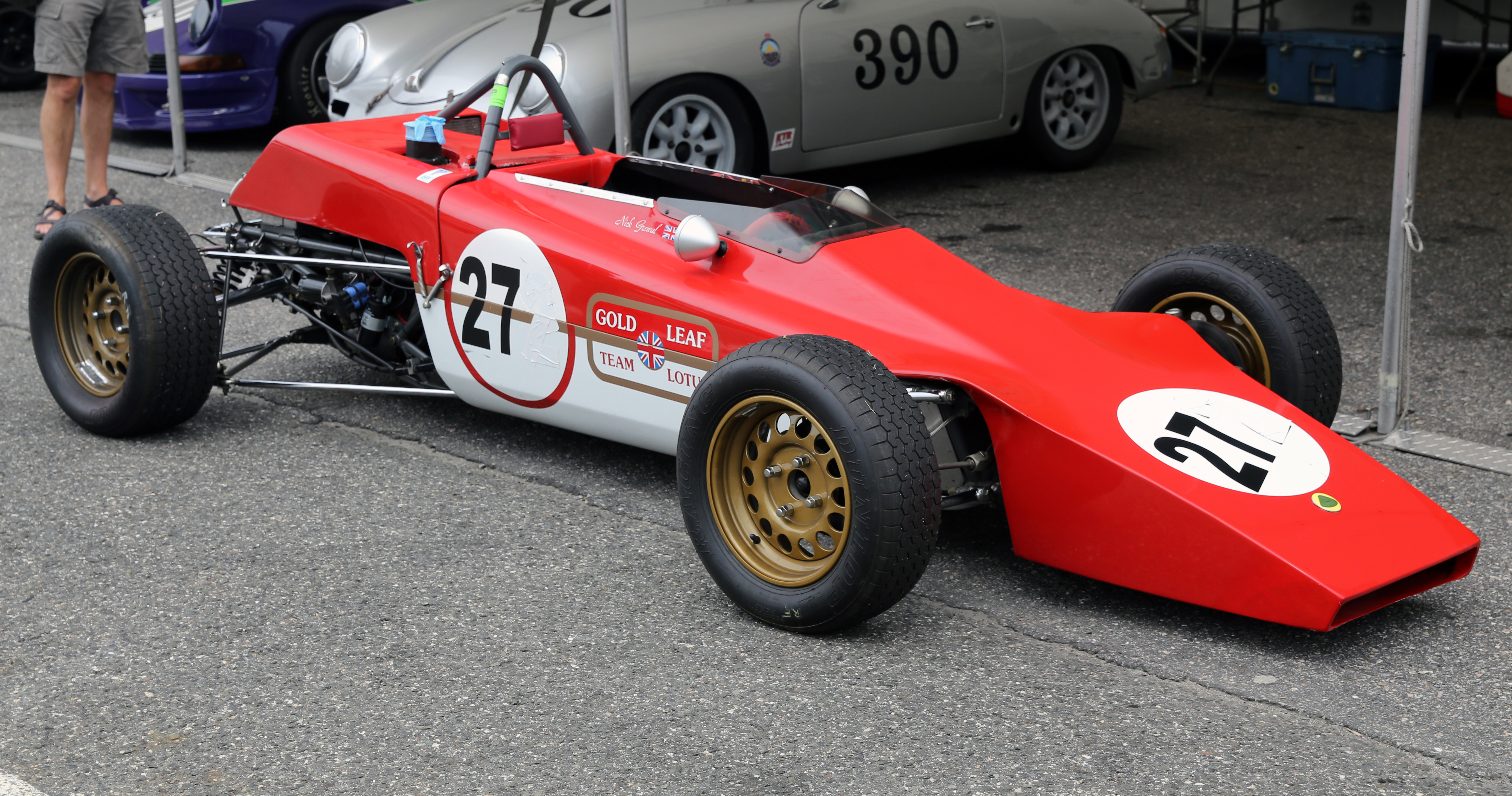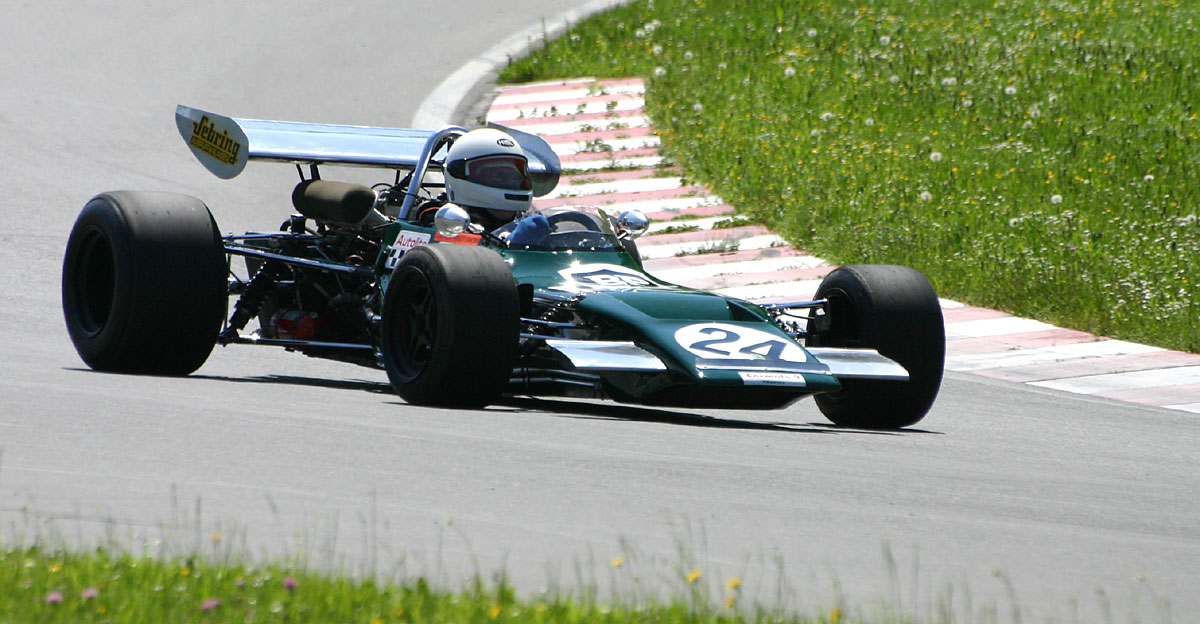Lotus 69 on:
[Wikipedia]
[Google]
[Amazon]
 The Lotus 69 was an
The Lotus 69 was an
 He left the basic Lotus 59 construction untouched and only changed the central monocoque section, which contained the two fuel tanks. The chassis mounts have been modified and the front has been adapted to the new regulations to reduce the radiator inlet. Since only engines up to a maximum of 1600 cc were allowed in Formula 2 from 1967 to 1971, the car received a 1.6-liter Cosworth FVA
He left the basic Lotus 59 construction untouched and only changed the central monocoque section, which contained the two fuel tanks. The chassis mounts have been modified and the front has been adapted to the new regulations to reduce the radiator inlet. Since only engines up to a maximum of 1600 cc were allowed in Formula 2 from 1967 to 1971, the car received a 1.6-liter Cosworth FVA  The basic vehicle construction was designed in such a way that by adding other suspensions and brakes, and by changing the body parts and the wheels, the Lotus 69 could be built into a Formula 3 or Formula B- compliant racing car.
The basic vehicle construction was designed in such a way that by adding other suspensions and brakes, and by changing the body parts and the wheels, the Lotus 69 could be built into a Formula 3 or Formula B- compliant racing car.
 With the increase in the displacement limit to 2000 cm³ in Formula 2, the racing cars were equipped with a Cosworth BDA engine in 1971.
The Lotus 69F was built to Formula Ford regulations and featured a space frame chassis with a modified front end and narrower wheels than the Formula 2 and Formula 3 variants. It was delivered with 1.6-liter Ford/Lotus engines.
A total of 57 racing cars were produced by the Lotus 69, of which eight cars were built for Formula 2.
A Formula 2 vehicle was purchased by Pete Lovely and briefly converted into a Formula 1 car. He used this in 1971 at the Canadian Grand Prix and the US Grand Prix without success.
The Lotus 69 was the last model developed and produced for customer use. In 1971 Colin Chapman closed Lotus Racing Ltd. and concentrated on Formula 1 motorsport with his works team.
With the increase in the displacement limit to 2000 cm³ in Formula 2, the racing cars were equipped with a Cosworth BDA engine in 1971.
The Lotus 69F was built to Formula Ford regulations and featured a space frame chassis with a modified front end and narrower wheels than the Formula 2 and Formula 3 variants. It was delivered with 1.6-liter Ford/Lotus engines.
A total of 57 racing cars were produced by the Lotus 69, of which eight cars were built for Formula 2.
A Formula 2 vehicle was purchased by Pete Lovely and briefly converted into a Formula 1 car. He used this in 1971 at the Canadian Grand Prix and the US Grand Prix without success.
The Lotus 69 was the last model developed and produced for customer use. In 1971 Colin Chapman closed Lotus Racing Ltd. and concentrated on Formula 1 motorsport with his works team.
 The Lotus 69 was an
The Lotus 69 was an open-wheel
An open-wheel single-seater (often known as formula car) is a car with the wheels outside the car's main body, and usually having only one seat. Open-wheel cars contrast with street cars, sports cars, stock cars, and touring cars, which have thei ...
formula racing
Formula racing (known as open-wheel racing in North America) is any of several forms of open-wheeled single-seater motorsport. The origin of the term lies in the nomenclature that was adopted by the FIA for all of its post-World War II single ...
car developed by Lotus in 1969 for use in Formula 2
Formula Two (F2 or Formula 2) is a type of open-wheel formula racing category first codified in 1948. It was replaced in 1985 by Formula 3000, but revived by the FIA from 2009–2012 in the form of the FIA Formula Two Championship. The name re ...
, Formula 3
Formula Three, also called Formula 3, abbreviated as F3, is a third-tier class of open-wheel formula racing. The various championships held in Europe, Australia, South America and Asia form an important step for many prospective Formula One dri ...
, and Formula Ford.
Development
Since the Formula 2 regulations for 1970 provided for extensive changes to the vehicles, Dave Baldwin developed the Lotus 69 based on the Lotus 59 Formula 2 car. He left the basic Lotus 59 construction untouched and only changed the central monocoque section, which contained the two fuel tanks. The chassis mounts have been modified and the front has been adapted to the new regulations to reduce the radiator inlet. Since only engines up to a maximum of 1600 cc were allowed in Formula 2 from 1967 to 1971, the car received a 1.6-liter Cosworth FVA
He left the basic Lotus 59 construction untouched and only changed the central monocoque section, which contained the two fuel tanks. The chassis mounts have been modified and the front has been adapted to the new regulations to reduce the radiator inlet. Since only engines up to a maximum of 1600 cc were allowed in Formula 2 from 1967 to 1971, the car received a 1.6-liter Cosworth FVA four-cylinder engine
The engine configuration describes the fundamental operating principles by which internal combustion engines are categorized.
Piston engines are often categorized by their cylinder layout, valves and camshafts. Wankel engines are often categorize ...
and a Hewland
Hewland is a British engineering company, founded in 1957 by Mike Hewland, which specialises in racing-car gearboxes. Hewland currently employ 130 people at their Maidenhead facility and have diversified into a variety of markets being particul ...
F.T.200 gearbox.
 The basic vehicle construction was designed in such a way that by adding other suspensions and brakes, and by changing the body parts and the wheels, the Lotus 69 could be built into a Formula 3 or Formula B- compliant racing car.
The basic vehicle construction was designed in such a way that by adding other suspensions and brakes, and by changing the body parts and the wheels, the Lotus 69 could be built into a Formula 3 or Formula B- compliant racing car.
 With the increase in the displacement limit to 2000 cm³ in Formula 2, the racing cars were equipped with a Cosworth BDA engine in 1971.
The Lotus 69F was built to Formula Ford regulations and featured a space frame chassis with a modified front end and narrower wheels than the Formula 2 and Formula 3 variants. It was delivered with 1.6-liter Ford/Lotus engines.
A total of 57 racing cars were produced by the Lotus 69, of which eight cars were built for Formula 2.
A Formula 2 vehicle was purchased by Pete Lovely and briefly converted into a Formula 1 car. He used this in 1971 at the Canadian Grand Prix and the US Grand Prix without success.
The Lotus 69 was the last model developed and produced for customer use. In 1971 Colin Chapman closed Lotus Racing Ltd. and concentrated on Formula 1 motorsport with his works team.
With the increase in the displacement limit to 2000 cm³ in Formula 2, the racing cars were equipped with a Cosworth BDA engine in 1971.
The Lotus 69F was built to Formula Ford regulations and featured a space frame chassis with a modified front end and narrower wheels than the Formula 2 and Formula 3 variants. It was delivered with 1.6-liter Ford/Lotus engines.
A total of 57 racing cars were produced by the Lotus 69, of which eight cars were built for Formula 2.
A Formula 2 vehicle was purchased by Pete Lovely and briefly converted into a Formula 1 car. He used this in 1971 at the Canadian Grand Prix and the US Grand Prix without success.
The Lotus 69 was the last model developed and produced for customer use. In 1971 Colin Chapman closed Lotus Racing Ltd. and concentrated on Formula 1 motorsport with his works team.
Achievements
Jochen Rindt won the first two races of the 1970 Formula 2 season with the Lotus 69 before concentrating on Formula One. The following year, Emerson Fittipaldi won five Formula 2 races with the car. In the two British Formula 3 championships in 1971, Dave Walker won 25 out of a total of 32 races with the racing car and thus won the two championship titles.References
{{reflist Formula Two cars Formula Three cars Formula Ford cars 69 Open wheel racing cars